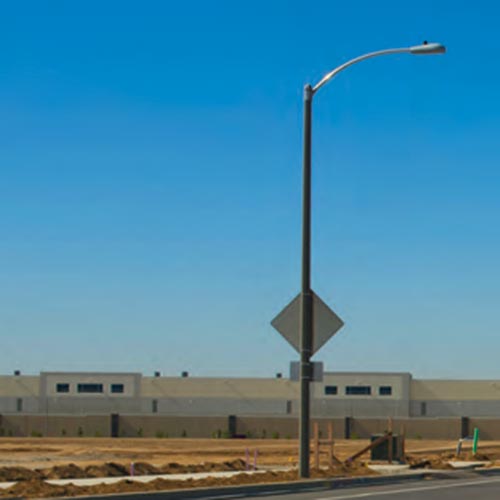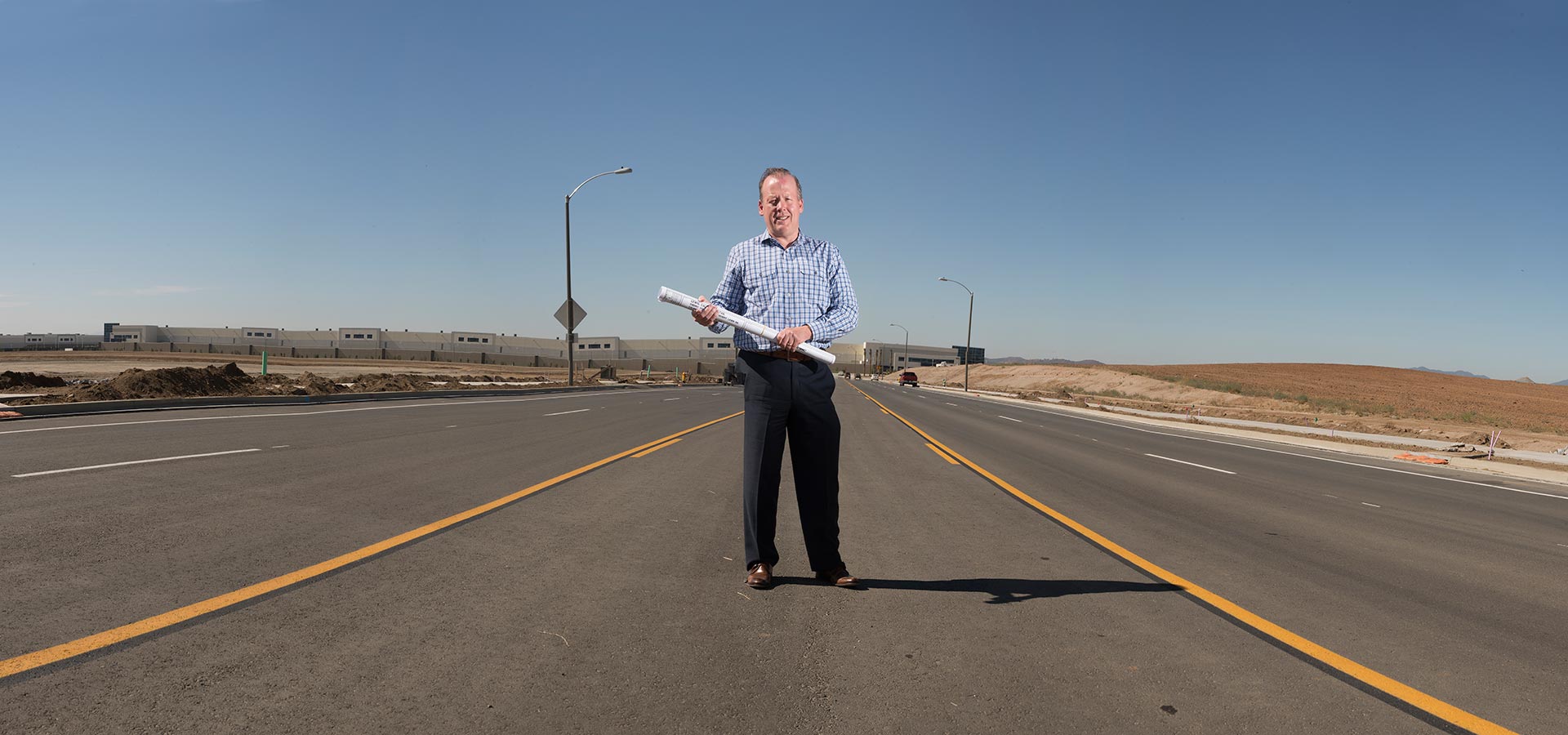Prime Development
Improving Life for the Amazon.com Generation
By Zoe Lance
The top-selling electronic device on Amazon.com is a Fire TV stick, a small streaming device about the size of a USB drive. Buying one is easy, especially if you’re one of the 100 million people across the world who have an Amazon Prime account. Open the Amazon app on your phone, search for the device and tap on Buy Now. Two days later, a package will arrive at your doorstep.
Larry Gates (’87, civil engineering) and his company, the Anaheim Hills-based DRC Engineering, are immersed in the area of construction that makes this happen. Amazon and UPS each recently leased 1 million-square-foot buildings that DRC helped build on unused land at March Air Force Base in Riverside. To accommodate the high volume of products to keep the shelves stocked — as well as the space needed for employees to put shipments on conveyer belts — these warehouses must be enormous and in proximity to major metropolitan areas.
Across California, construction and engineering industries are rethinking existing spaces and practices to serve both economic and social needs. The demand for more housing is also a crucial factor in the equation.
“The big push on developers lately are these big box industrial sites HOW MUCH IS 1 MILLION SQUARE FEET? 29 Taj Mahals 18 White Houses 5 CLA Buildings 1.5 Louvres because existing buildings can’t handle the work that Amazon and other retailers need,” Gates says. “We’re making the best use of it by putting in new apartments in the cities and then moving the industrial spaces out to the Inland Empire.”
When Gates co-founded DRC in 1997, the engineering and land surveying firm’s portfolio often consisted of redeveloping former military or industrial facilities into new shopping centers anchored by department stores or large retailers. In the last two decades, online shopping has radically changed the demand for retail and residential development.
“If you could only build on open space, then we would run out of work,” Gates says. “There’s definitely been a change in our business, but it’s nice to see redevelopment happen and how it can revitalize places.”
To better serve both their clients and the communities, DRC has focused on building mixed-use developments where people can both live and play.
Gates learned that there was a strong connection between engineering and business during his time at Cal Poly Pomona. He was drawn to civil engineering both because of its familiarity — his father was an engineer in the Air Force — and practicality. As a student, he explored his options on how to meld his two interests.
“Civil engineering gives you a well-rounded education,” Gates says. “The Cal Poly Pomona engineering program made it so we could go to our first job and get started right away. We did similar work in the classroom that gave us a good understanding of the principles and then applied them to the projects quicker than other students are able to.”
As an active alumnus at Cal Poly Pomona, he serves as the board chair of the Cal Poly Pomona Philanthropic Foundation. He also serves on the College of Engineering Dean’s Leadership Council, contributes to scholarship funds and recruits students to work at DRC. Forging connections between the college and industry is important to him, as it fuels a pipeline of new professionals who aren’t afraid to try new ideas and will shape the future of engineering in the state.
“A civil engineer designs the things that make your daily life a little bit easier,” he says. “Cal Poly Pomona students want to get out in the field, design something and see it built. It’s what Cal Poly Pomona is known for.”

How Much is 1 Million Square Feet?
- 29 Taj Mahals
- 18 White Houses
- 5 CLA Buildings
- 1.5 Louvres
Larry Gates and DRC Engineering are shifting their focus to build mega distribution centers, like this one in Riverside
